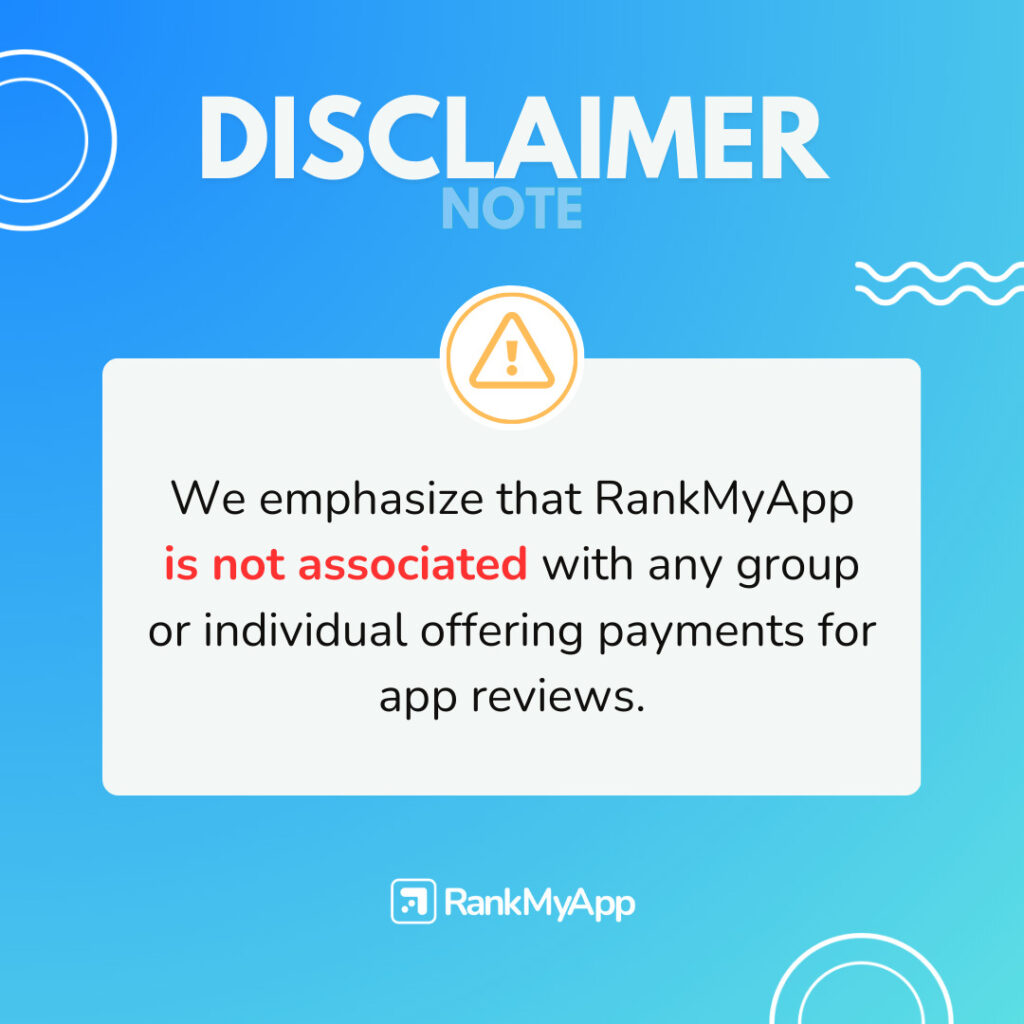If you’re thinking about developing an app for your business or already have an app, you probably have asked yourself: what is ASO? This little initials have so much to say and it is so important to an app’s growth.
But, to understand what is ASO, we’re going to uncover all the mystery behind the optimization of an app. And after this guide, you’ll see the potential that your app can have in app stores.
What is ASO definition?

ASO means App Store Optimization. It is the process of optimizing the app’s page in app stores. The goal of optimization is to give more visibility to the app and put it in app ranking. And all of this happens because of the keywords.
The app stores works with keywords to classify apps. And this is used because search is the primary way people find apps. Do you know what it means? That the probability of your app being found this way increases.
Imagine this situation. When you want an app that edits photos, what words you probably will search? “photo edit”, right? So, a lot of apps will appear as search results but you’ll not look at more than 10, because people in general want to find services faster.
The goal of the optimization is make your app one of the firsts in the listed results. When people search keywords that make sense with the service that you provide, your app will be there.
What is ASO (App Store Optimization)?
ASO, or App Store Optimization, is the process of improving the visibility and discoverability of a mobile app in the app stores (such as the Apple App Store and Google Play Store). Similar to SEO (Search Engine Optimization) for websites, ASO aims to increase an app’s ranking in search results and attract more organic (non-paid) downloads from potential users.
How Does ASO Work?
It is possible to optimize all the elements of your app. We’re going to see each element to understand the process. But before that you have to make decisions.
First of all, think about the characteristics of your app. What you do, what category in app store it fits, your target and what is the difference of your app compared to the rest?
App title
The title has to be memorable. People have to remember the name of your app to move your app forward. We recommend choosing a short and easy name, and add the main keyword on this.
For example, as a strategy to attract more users, apps about sport add the “world cup” in the title during the event. This is one more argument, to always observe the strategies of competitors too, because it can change all the time.
App Icon
Your app icon serves as the visual representation of your brand and is often the first impression users have of your app. Therefore, it’s crucial to invest time and effort into creating an icon that is not only visually appealing but also effectively communicates the purpose and identity of your app.
First and foremost, it’s important to avoid an icon that is unattractive or confusing. An ugly or confusing icon can deter users from downloading your app, as it may give the impression of poor quality or lack of professionalism. Instead, aim for an icon that is eye-catching, memorable, and instantly recognizable.
One way to ensure cohesiveness across your app’s branding is to define a consistent color palette. This color palette should be reflective of your app’s overall design aesthetic and should be used not only within the application itself but also in the app icon. Consistency in color helps to reinforce brand recognition and creates a sense of unity across all aspects of your app’s branding.
Once you have established a color palette, the next step is to choose an image for your app icon that is not only visually appealing but also aligns with your app’s purpose and identity. The image should be well-designed, with clear lines and shapes that are easily recognizable at a glance. It should also be cohesive with the rest of the elements in your app’s listing, including screenshots, description, and promotional materials.
By investing time and attention into creating a visually appealing and cohesive app icon, you can make a positive first impression on users and increase the likelihood of your app being downloaded and used. Remember, your app icon is often the first point of contact users have with your app, so make it count!

App description
While it’s true that many users may not take the time to read through app descriptions thoroughly, overlooking this aspect of your app’s listing would be a missed opportunity. In fact, the app description plays a crucial role in ASO and can significantly impact your app’s discoverability and ranking within app stores.
One of the key advantages of the app description is that it provides you with the freedom to utilize keywords effectively. This is the only section of your app’s listing where you have complete control over the content and can strategically incorporate relevant keywords.
To optimize your app description for ASO, it’s essential to identify the keywords that your target audience is likely to search for when looking for apps similar to yours. These keywords should accurately reflect the features, functionality, and purpose of your app.
While you don’t necessarily need to fill the entire space with keywords, it’s important to make efficient use of the available character limit. Subtly integrate relevant keywords throughout the description, ensuring a natural flow of language that resonates with users.
By strategically incorporating keywords into your app description, you can increase the likelihood of your app appearing in search results for relevant queries. This not only enhances your app’s visibility but also improves its chances of being downloaded by users who are actively seeking the services or features it offers.
Photo and videos
People don’t read app description but in compensation observe a lot the screenshots and watch the videos available on app page. This because it’s easier to understand the dynamic of the app seeing how it works for real.
So, depending on the app store, the number of screenshots can be different. Anyway, prefer to put the main ones first. This way, people will be more interested in your app.
While this guide provides a comprehensive overview of ASO, it’s essential to recognize that ASO is an ongoing process that requires continuous monitoring and optimization. By leveraging ASO effectively, you can unlock your app’s full potential and maximize its visibility and success within app stores.
Key Components of ASO
- Keyword Optimization: Choosing relevant keywords that potential users are likely to search for when looking for an app like yours. These keywords should be strategically placed in the app’s title, description, and metadata to improve its visibility in search results.
- App Title and Description: Crafting an engaging and informative title and description that accurately represents the app’s features, benefits, and value proposition. A compelling title and description can entice users to download the app and improve its conversion rate.
- App Icon and Screenshots: Designing an eye-catching app icon and high-quality screenshots that showcase the app’s user interface, features, and functionality. Visual assets play a crucial role in attracting users’ attention and convincing them to explore the app further.
- App Ratings and Reviews: Encouraging satisfied users to leave positive ratings and reviews for the app, as these social proof elements can influence potential users’ decision-making process. Addressing negative reviews and feedback promptly and professionally is also essential for maintaining a positive reputation.
- App Localization: Adapting the app’s metadata, including the title, description, and keywords, to cater to different languages and regions. Localizing the app content increases its relevance and appeal to users in specific geographic locations, leading to higher download rates.
- App Performance and User Engagement: Ensuring that the app offers a seamless user experience, fast performance, and valuable features. Positive user engagement metrics, such as app retention, session duration, and in-app actions, contribute to higher app store rankings and visibility.
Benefits of ASO
- Increased Visibility: Higher app store rankings lead to increased visibility and exposure to potential users, resulting in more organic downloads without the need for paid advertising.
- Cost-Effective: ASO is a cost-effective marketing strategy compared to paid user acquisition methods like app install ads. By optimizing your app’s presence in the app stores, you can attract users at a lower cost per download.
- Improved Conversion Rate: Optimizing your app’s metadata and visual assets enhances its appeal and relevance to users, leading to higher conversion rates from app store visitors to actual downloads.
Essential Strategies for App Store Success
ASO encompasses a range of strategies and tactics aimed at improving an app’s visibility, discoverability, and conversion rate in the app stores. By understanding and implementing these key concepts, app developers and marketers can effectively optimize their app store presence and attract more users to their apps.
- Competitor Analysis: Understanding how your app compares to competitors in terms of keywords, rankings, and features can provide valuable insights for ASO strategy. For example, analyzing competitor apps’ keyword usage and ranking positions can help identify opportunities for improvement. Tools like App Annie or Sensor Tower can assist in conducting competitor analysis.
- A/B Testing: A/B testing involves experimenting with different app store elements, such as app icons, screenshots, and descriptions, to determine which versions perform better in terms of conversion rate. For instance, you could test two different app icons to see which one leads to higher download rates. Tools like Storemaven or SplitMetrics allow you to conduct A/B tests for app store assets.
- Seasonal Trends and Events: Taking advantage of seasonal trends and events can boost app visibility and downloads. For example, a fitness app might see increased demand during the New Year’s resolution season. By optimizing app store assets and running targeted campaigns around relevant events, apps can capitalize on these opportunities to attract more users.
- User Feedback and Iteration: Continuously collecting user feedback and iterating on app store assets based on that feedback is crucial for long-term ASO success. For instance, if users consistently mention in reviews that they find the app description confusing, you can update the description to address their concerns and improve user experience.
- App Store Algorithm Updates: Staying informed about changes to app store algorithms and guidelines is essential for maintaining and improving app store rankings. For example, both the Apple App Store and Google Play Store periodically update their algorithms, impacting app visibility and ranking factors. Keeping up-to-date with these changes allows app marketers to adjust their ASO strategies accordingly.
- Localization Best Practices: Localizing app store assets for different languages and regions can significantly impact app discoverability and downloads. For example, a gaming app might use different screenshots and keywords for the English and Japanese versions of the app store listing to better resonate with each target audience.
In summary, ASO is a vital component of mobile app marketing that focuses on optimizing various elements of an app’s presence in the app stores to improve its visibility, discoverability, and download conversion rate. By implementing ASO best practices, app developers and marketers can effectively reach their target audience and achieve their app marketing goals.
To delve deeper into the intricacies of ASO and unlock advanced strategies, be sure to check out RankMyApp’s comprehensive tutorial on ASO. Happy optimizing!





